YPT is constantly on the lookout for new destinations to offer you and we thoroughly research these locations before offering them to you, dear guests. So we needed to know if Benin had the YPT factor and it turned out it did! During our trip there, we were exposed to some wild and unique things along with a vibrant and very much alive voodoo culture. During such a trip, we visited Abomey, which can be seen as a voodoo capital of Benin.
A morning with the snake-king of Dassa
In the morning, already, we were coming from Dassa, up north, where we just climbed up a hill where the funerals of the local kings are happening since the fourth king there, King Ogoudou, who lived 155 years and was unable to die (but was deteriorating anyway) asked to be put in a seal granary so his protective longevity jujus would stop working and finally let him rest. The jujus did stop working but the king turned into a human-headed snake, got out of the granary and slid down the hill. To this day, this is history that is believed and respected by the people there. While similar stories are common in western culture, they usual date from the Middle Age or the Antiquity, in this case, King Ogoudou died in 1593. After this story, the bar was high to impress us, still, it happened.
Abomey, voodoo temple-o-rama
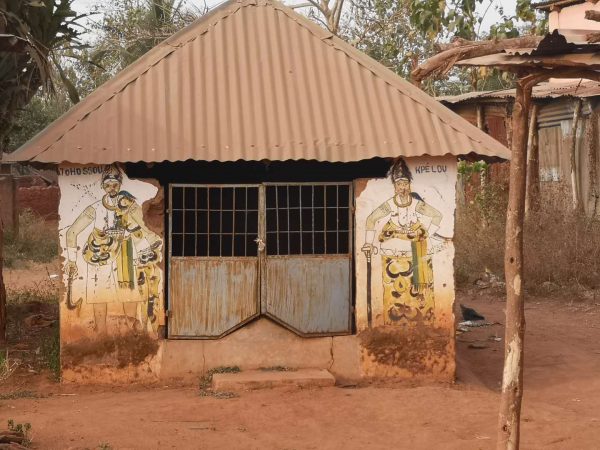
When we reached Abomey, we met with local voodoo expert and guide Thierry, who took us in the suburbs out of town on patchy roads. Already in Abomey city, we had sighted some strange houses. Those small cabins were decorated with drawings of people, or snakes, monsters or men with enormous penis. We were quickly informed that those cabins are in fact family voodoo temples, and that the drawing represent the divinities attached to the one ( royal) family which owns the temple. Once outside of town, however, these temples were everywhere. How many royal families could there be in Abomey? What must be said here, is that all grand kids of a king are prince and princesses and that all offshoots of a prince or a princess, whether they become king/queen or not, are also prince and princesses in turn. Since most kings in the region selected at least 47 wives, you can understand that the royal blood is well spread amongst the community and with it comes strong voodoo power.
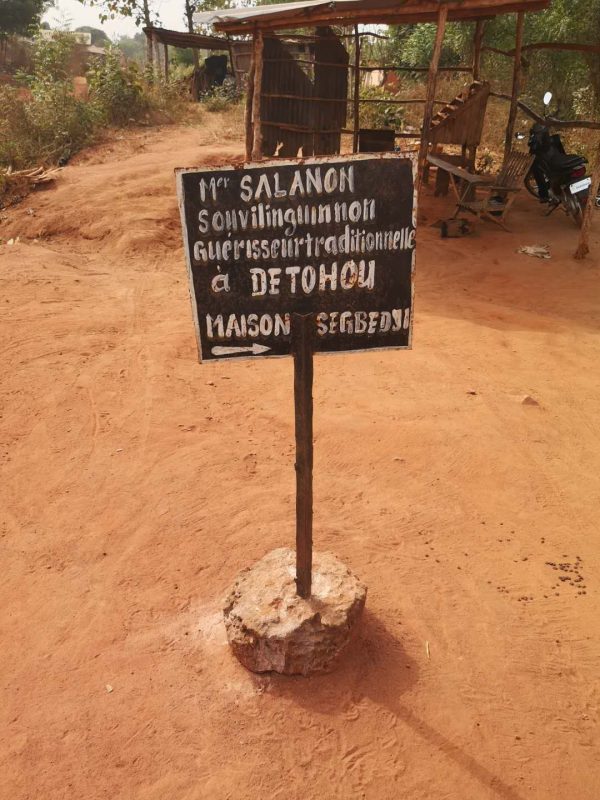
In the suburbs, Thierry brought us to a voodoo temple. There, we met the voodoo priest in charge of the shrine, who after receiving our offerings, opened his temple to us. During our visit, we were introduced to three different rooms where voodoos are venerated. As a polytheistic religion, each voodoo has a avatar, represents an element and has other voodoos it likes, others it dislikes and takes a specific kind of offering for their sustenance. A lot of the offerings the priest receive thus go into satisfying the appetites of the wide collection of voodoos statuettes found here. Getting into the details of each god would take too much time and in, fact, is the subject of the following blog. For now, let’s just say that the Legba voodoo, right outside the temple as it is a protector of home, surprised us.
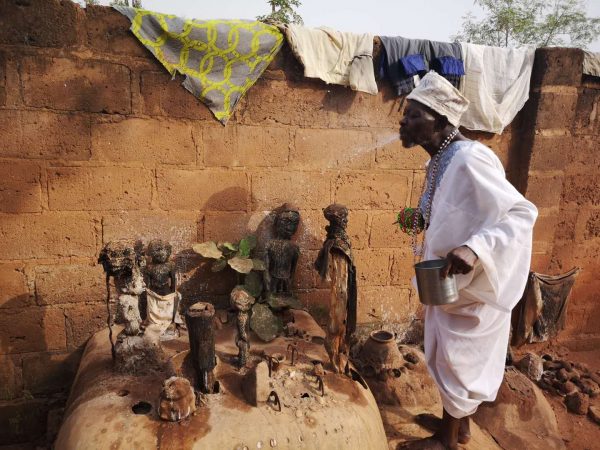
We felt privileged to witness a very intimate ceremony with the priest, who takes care of these different statuettes like they were his friends, talking to each of them, throwing water at them as an offering and feeding them with everything from palm oil to chicken blood by smearing them with it.
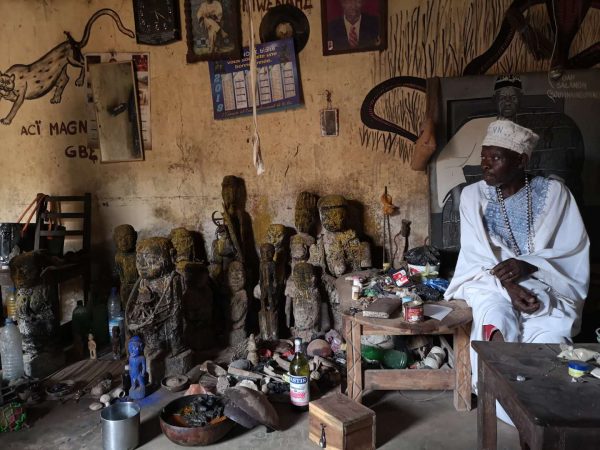
The priest, eleventh of his line, inherited his powers from his father, who lived up to the age of 135 years old and had 57 seven children. His bedroom is actually built right on top of his father tomb and is filled with different charms and idols which were introduced to us one by one.
The voodoo church of Abomey
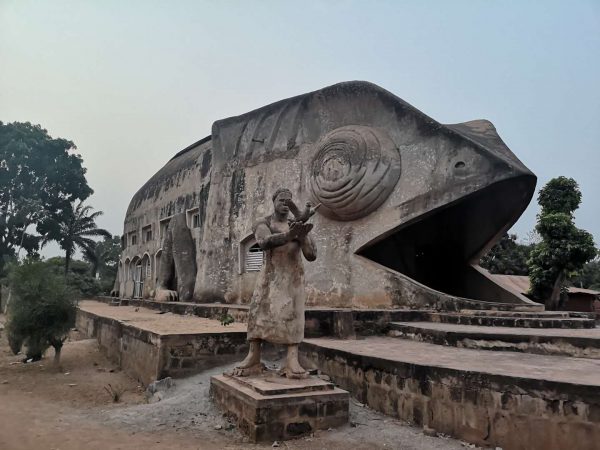
After leaving the shrine, we were taken to a voodoo church. The church, which is only opened on Sundays for mass, is extremely interesting as it is shaped like a chameleon. We’ll make sure to visit this place on a Sunday on our first group tour there. Apart from the church, we also saw a nunnery where only initiated nuns can enter. The nunnery, far from what you’d expect in the catholic religion, had interesting decoration.
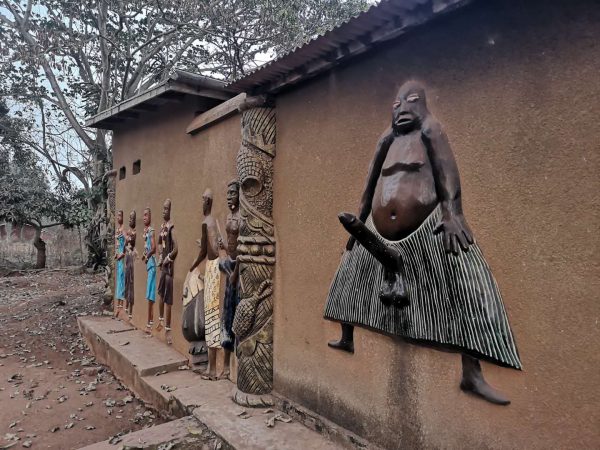
Finally, we were taken to the local fetish market. While Lomé has the biggest fetish market and is rather photo friendly, it is also the one that sees the most tourists. The one in Abomey was not open to photos but was definitely more real. Here, we saw plenty of locals arguing over the price of certain grigris as well as live animals, from the now cliché goat and chicken to some more controversial such as cats and dogs, for sacrifices. While one might be shocked that so much haggling is happening around trinkets which are considered sacred, it must be remembered that voodoo is a religion based on bartering. The believers are asking gods for favours, protections or services, for which they are promising to give or do something, so haggling really isn’t that unnatural. One of the proposed etymology of Vodun is, afterall, ”use what you need within nature”
We finished the day mind blown by the complexity and variety of voodoo rites. A religion where spirits, monsters and magic are hidden everywhere and making the world go round.





